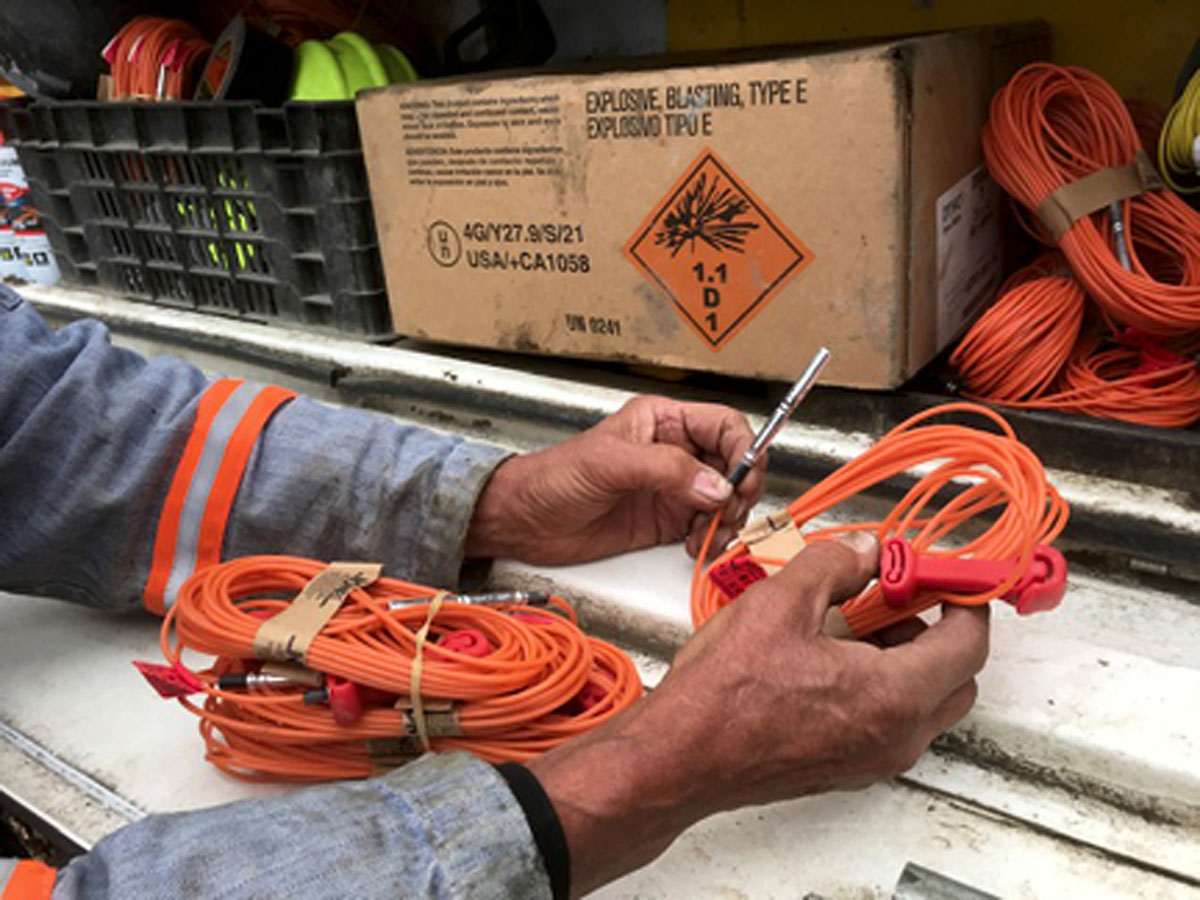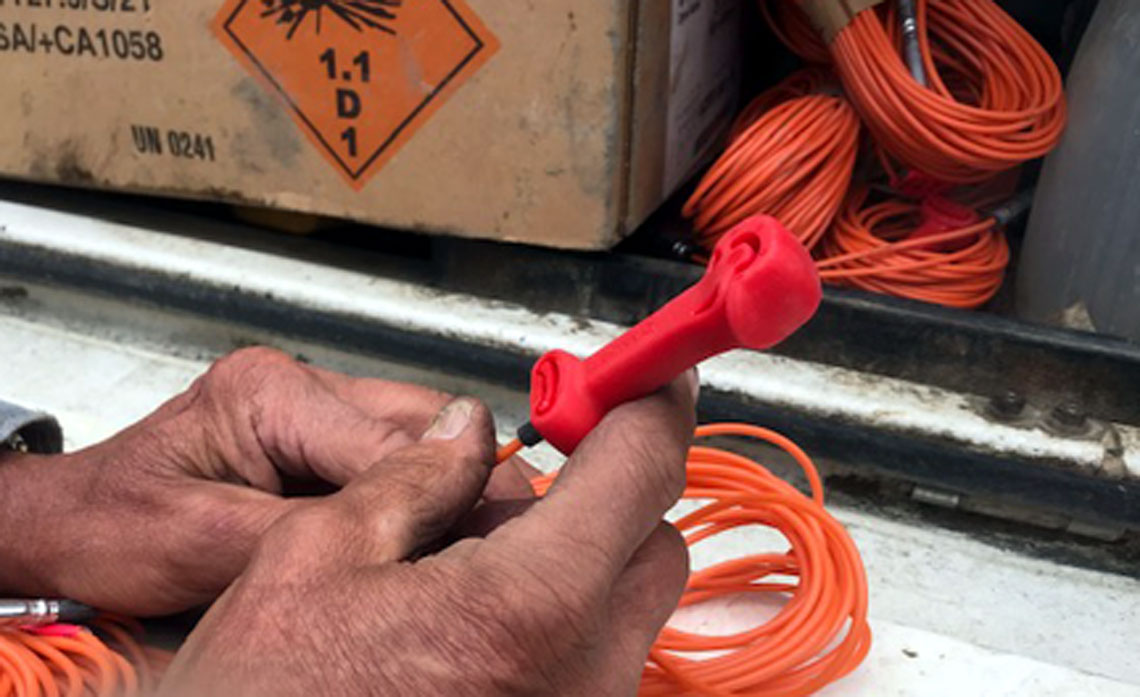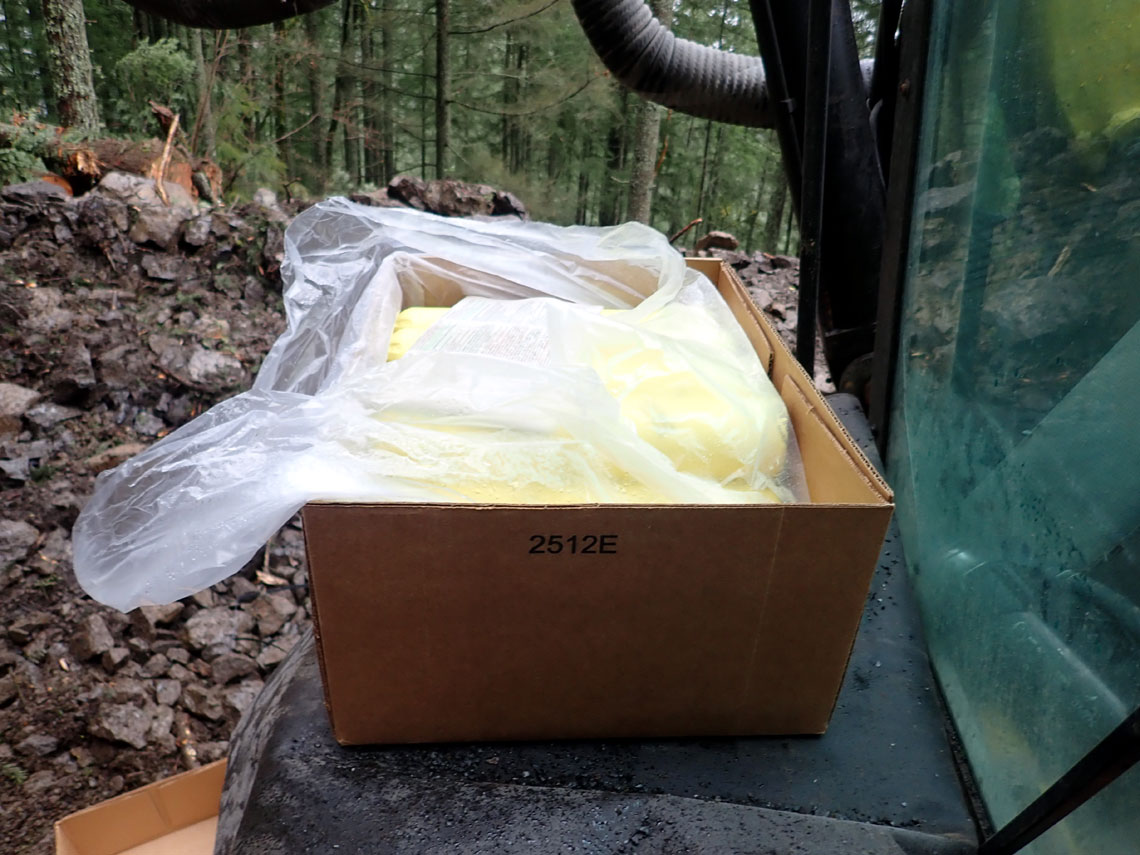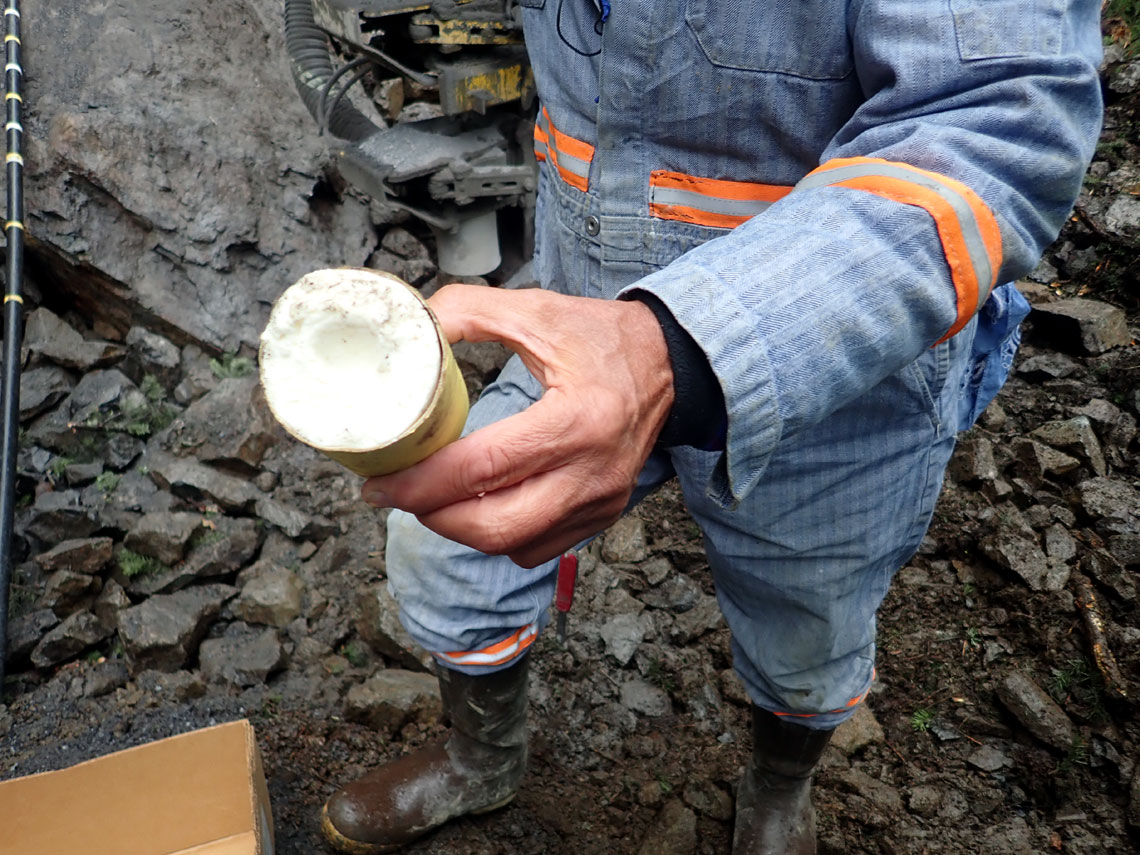|
|
|
|
Blasting with Primacord
|
|
| Primacord is initiated with a blasting cap or by a donor line of detonating cord or other high explosive. It detonates along its entire length at a velocity of approximately 23,000 feet (7,000 meters) per second. It is used to create explosive effects and to build reliable explosive charges. It is used in conjunction with other high explosive materials to form charges, including linear charges, capable of near instantaneous results. PRIMACORD Detonating Cord is an exploding cord consisting of a continuous explosive core bound by textile yarns and finished with plastic and wax as waterproofing agents. PRIMACORD® manufacturing begins with the production of PETN, RDX o other high explosives. Textile yarns, polymers and waxes are used in a controlled production process to complete the manufacture. Ensign-Bickford Aerospace & Defense Company (EBA&D) has the capability to design, develop, produce, package and test a wide range of detonating cord products as specified by customer requirements. EBA&D is the leading supplier to the United States Military and International Forces.
|
|
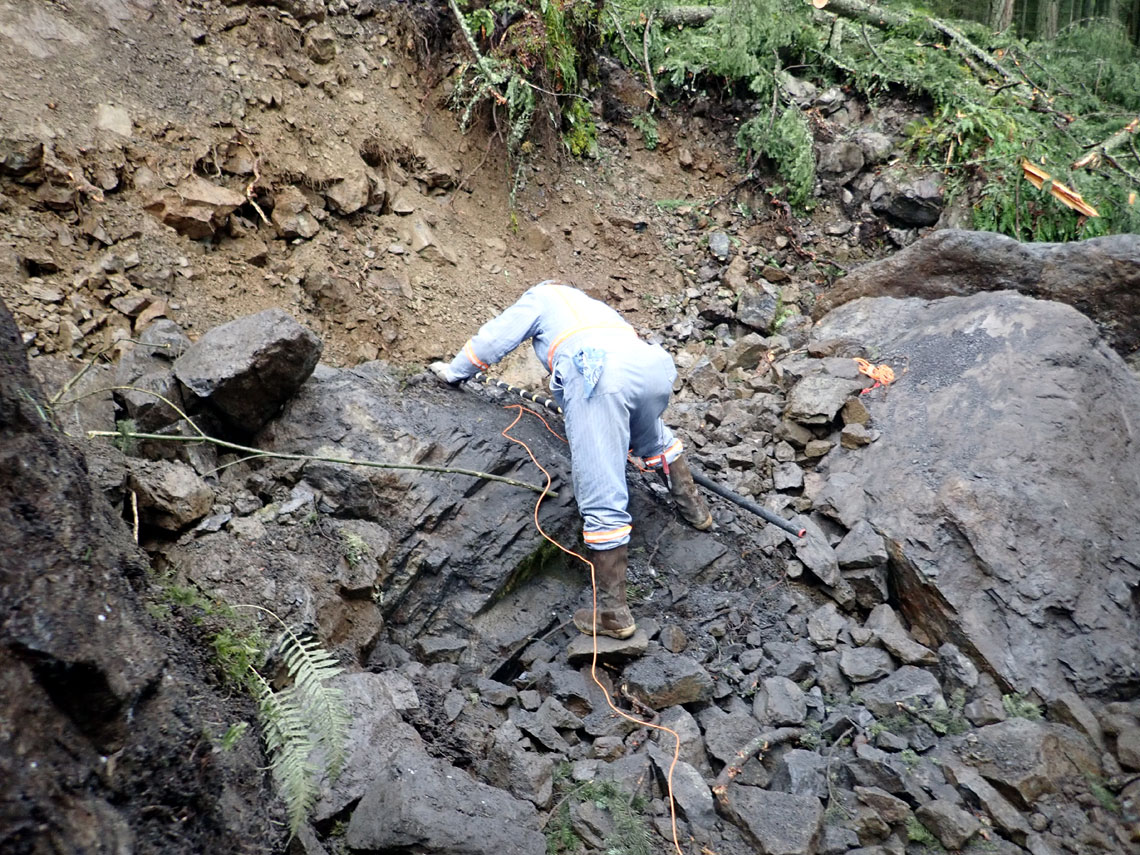 |
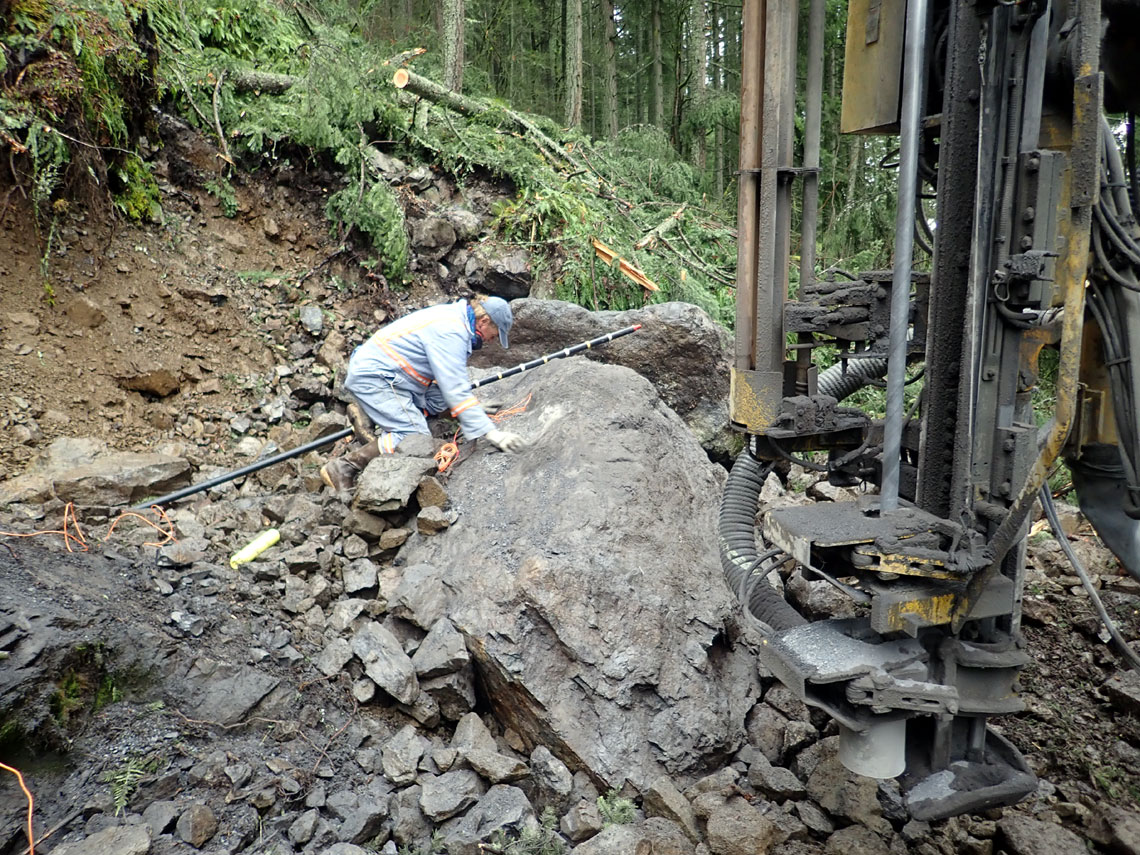 |
|
|
|
|
|
|
|
|
|
|
More about
plastic
explosives
|
|
| BACK | |
|
03/21/22 |
|

